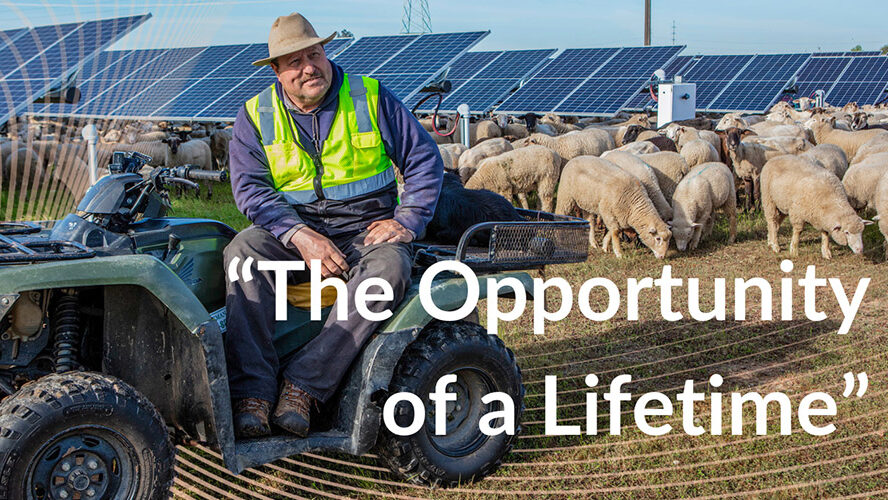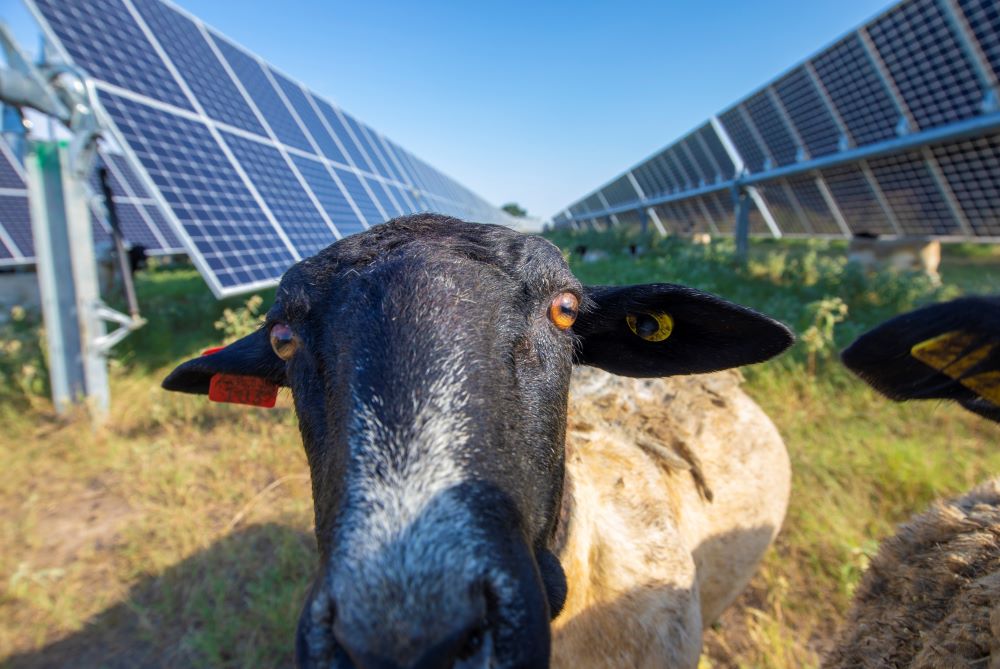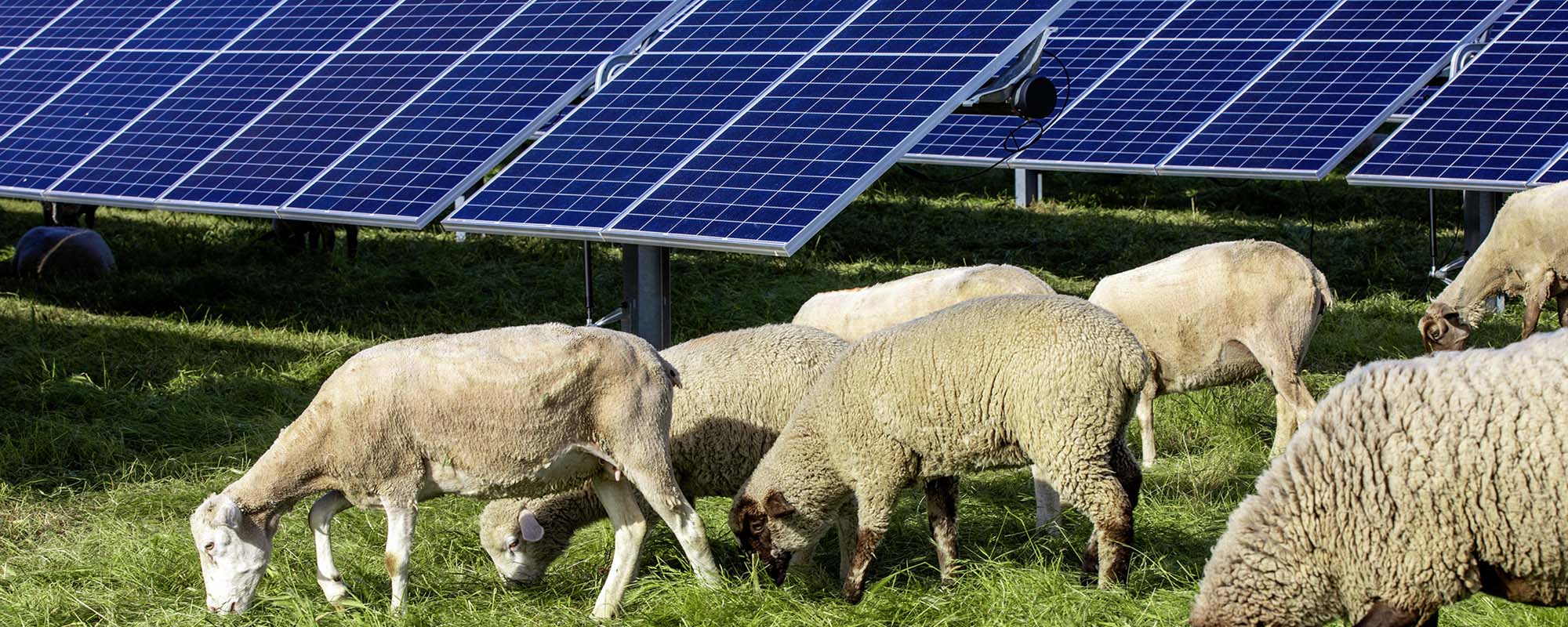How targeted solar grazing is helping the US sheep industry make a comeback
For California farmer Mark Blakeman, sheep are a way of life. After a long day working with his sheep, he goes home to read sheep magazines, watch videos about sheep and listen to sheep podcasts.
“I’ve always wanted to raise sheep,” he said. “I knew from when I was little this is what I’m going to do.”
But the sheep life can be a hard life, especially in drought-stricken California. Even if you can afford the pricey farmland, among the highest in the US, you can’t feed a hungry flock on dried-out brown grass.
Blakeman’s solution: offering targeted grazing services to paying customers. Rather than paying for his own pastureland to feed his flock, Blakeman transports his flock to third-party sites in need of natural vegetation management. The sheep “mow the lawn” as they graze, and Blakeman gets paid to provide this service, while still producing lamb and wool as he did before.

In 2024, Blakeman added Lightsource bp’s Wildflower solar farm to his roster, bringing more than 800 ewes and lambs to the 16.5MW Sacramento, California solar project.
Depending on the local climate and vegetation needs, solar grazing can occur year-round or during a single season. At Wildflower, Blakeman slowly moves the flock throughout the site over several weeks in the spring, leaving well-groomed grass and rich soil in their wake.
“Grazing on solar ground brings an income into our operation that we didn’t have when we were grazing on our own land,” he said. “With all the costs of production going up, I don’t believe that we could do it traditionally without having these jobs. I think it’s saved our business.”
Come next spring, Blakeman Livestock will return to the solar farm, ready to do it all again.
New revenue keeps family farms afloat
Today, Ryan Indart is a leader in his industry, a fourth-generation rancher with thousands of sheep in his care. But like many other young farmers, he had a rocky start. After buying the business from his father, he saw California getting only dryer and more expensive. After one particularly rough drought season, Indart was seriously questioning whether he could provide for his family.
“You can’t survive, in California or elsewhere, with just producing lamb and wool as a traditional sheep rancher. You’ve got to be doing something else, a separate revenue stream,” he said.
An introduction to California’s burgeoning solar industry turned his luck around. Indart was granted a contract to graze his sheep on a new solar project near his home farm, receiving regular payments for taking care of the land. He was doing what he’d always done, but earning additional revenue.
Today, solar grazing services are in such high demand that Indart has brought on fellow farmers (like Blakeman Livestock) to help manage the load.
Indart credits the solar industry with helping save the California sheep industry, turning sheep farming into a profitable possibility for himself and others. As solar energy grows across the United States, Indart hopes to see the domestic sheep industry grow right alongside it.
“The sheep industry, it’s been in decline for the last seventy, eighty years. This is an opportunity to turn all that around. You’ll see our herd begin to grow again, and that’ll be all because of the solar industry,” Indart said.
“The future is pretty bright for the American sheep producer if they can see opportunities like this.”
Rotational grazing can improve the ecosystem
In addition to creating a sustainable business model, solar grazing improves the land.
Long ago, herds of wild grazing animals like buffalo played a crucial role in the American ecosystem. As they moved around the landscape, they’d spread rich manure, kept biodiversity in balance and physically altered the soil with their hooves. Well-managed rotational livestock grazing reintroduces those benefits to the landscape.
At Wildflower Solar, Blakeman’s sheep focus on one section at a time, grazing down the thickest areas of vegetation before moving onto the next. They leave behind their waste, adding nutrient-rich organic matter back into the soil.
Blakeman carefully manages the intensity and timing of the rotation to ensure that invasive weeds are eaten away, while a greater variety of more valuable native plants are able bounce back better than before. In this way, he says that properly managed grazing can increase biodiversity — the variety and abundance of life on the land.
“You want the sheep there to spread their manure around and their foot action, just busting the ground up, allowing the seeds that are there to go into the ground,” Blakeman explained. “It’s important to create that whole ecosystem, and the sheep will do that over time.”

Learn more about agrivoltaics
Solar farms can grow more than electricity. Agrivoltaics (agriculture + “photovoltaics”) places crops or livestock underneath and between rows of solar panels. While researchers are trialling how to grow fruit and vegetable crops at scale, the most common and successful forms of agrivoltaics at solar projects currently are sheep grazing and bee keeping. These practices keep the land in agriculture while providing additional revenue for our farmer partners and ecosystem benefits to the environment.
Learn more about Lightsource bp’s agrivoltaics activity.
Latest news
29 May, 2025
Lightsource bp publishes 2024 Sustainability Report
Lightsource bp, a global trusted partner in delivering onshore renewable energy solutions, is pleased to publish its 2024 Sustainability Report.
28 Apr, 2025
Lightsource bp celebrates World Safety and Health Day 2025
Lightsource bp celebrates World Day for Safety and Health at Work. At Lightsource bp, safety isn’t just one of our core values, it’s ingrained in our culture.
22 Apr, 2025
Celebrating Earth Day: Renewable energy for our world
Lightsource bp celebrates Earth Day! We're safely delivering large-scale renewable energy projects to create sustainable value for our people, partners and planet.




